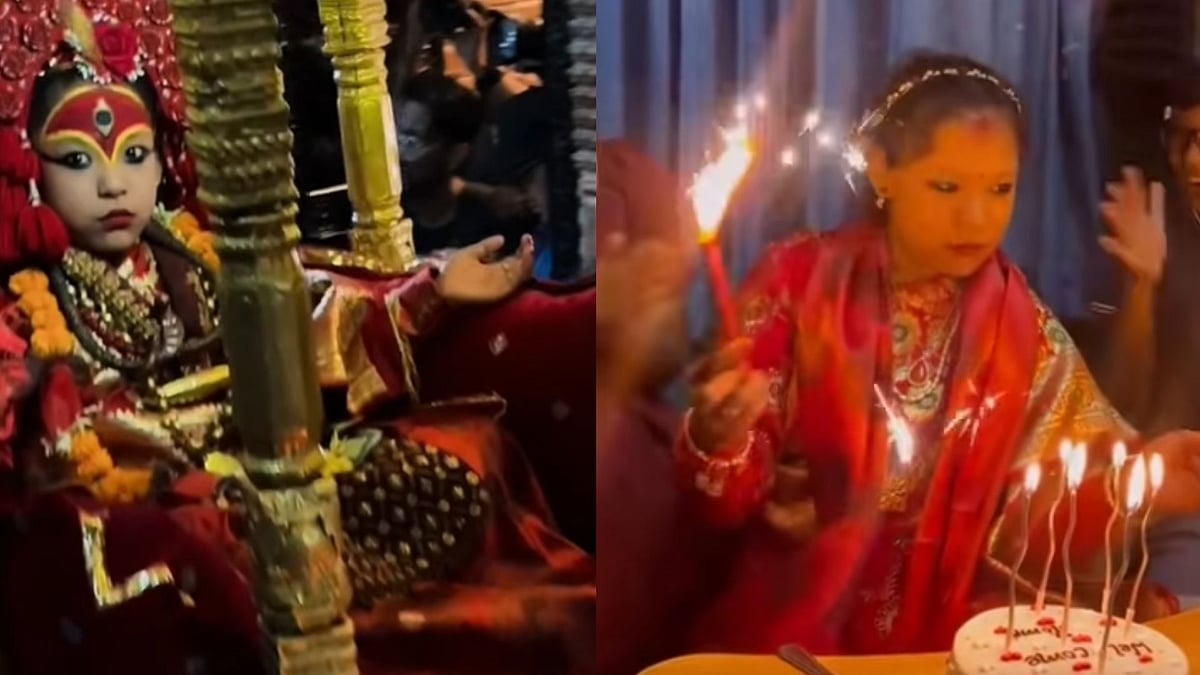How Former 'Kumari' Of Nepal Trishna Shakya Returns To Her Home: Enjoys Quality Time With Friends & Family
Her return is always a significant cultural moment in Nepal, as locals honor both her divine past and her new beginning

Recently, former Royal Kumari Trishna Shakya bid farewell to her divine role and returned to her family home, marking a heartwarming moment for Nepal. After years of being revered as the Living Goddess of Kathmandu, she now begins her journey back into ordinary life, attending school, spending time with friends, and enjoying the freedom of childhood that was once set aside for her sacred duties.
Her return is always a significant cultural moment in Nepal, as locals honor both her divine past and her new beginning. For Trishna, like all retired Kumaris, this transition from goddess to girl symbolises renewal, a reminder that even the divine must one day return to the rhythms of daily life.
The sacred tradition of the living goddess
The Royal Kumari of Kathmandu, chosen from the Shakya or Bajracharya clans, resides in the Kumari Ghar at Kathmandu’s Durbar Square, a historic palace that becomes her home until she reaches puberty. Dressed in red, adorned with gold jewelry, and wearing the symbolic “fire eye” on her forehead, the Kumari is regarded as a living embodiment of divine energy.
ALSO READ
She appears publicly during major festivals, most notably Indra Jatra, when thousands gather to seek her blessings. Other cities like Patan and Bhaktapur have their own Kumaris, each performing rituals and ceremonies that strengthen the region’s spiritual fabric.
Life after divinity: Adapting to the world beyond the temple
When a Kumari’s divine reign ends, typically upon the first sign of menstruation, she steps down, allowing another girl to take her place. The transition can be both emotional and challenging. After years of reverence and seclusion, returning to a normal life means rediscovering everyday experiences: attending school, learning to interact freely, and rejoining community life.
Many former Kumaris, including Trishna Shakya, have shared that while the change feels overwhelming at first, it brings joy and freedom. Their grace, composure, and quiet strength often inspire others, qualities carried from their divine years into their human lives.
A living symbol of Nepal’s cultural harmony
The Kumari tradition beautifully intertwines Hindu and Buddhist beliefs, representing Nepal’s deep spiritual unity. Devotees from both faiths revere the Kumari as a divine protector, embodying compassion, strength, and balance.
Today, the practice continues to evolve with modern sensibilities. Former Kumaris pursue education and careers, balancing tradition with progress. Cultural organisations now ensure they receive proper schooling and psychological support after retirement.
RECENT STORIES
-
-
-
-
-